Well cleaning device: how it can be
No matter how you protect your autonomous water source, sooner or later it can become clogged. If muddy water began to flow from the tap, then the time has come for a thorough cleaning.
There are various ways and devices for cleaning wells, each is good in its own way, but they are united by the need for a serious approach to the task. It is clear that with your bare hands you will not do anything, you will have to prepare the necessary equipment.
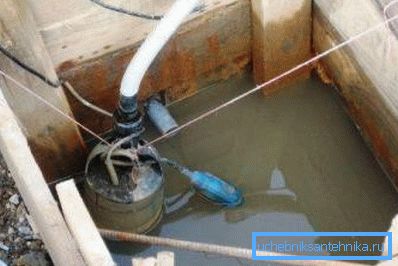
What to consider
To competently perform cleaning, you need to know the principle of operation of the well.
How the water is purified in the source
Both construction and maintenance of individual water sources in almost all cases is done manually. Two main devices are used - the pump or the manual grader for cleaning the well.
Note! The bottom of a standard well is covered with a layer of coarse sand and pebbles. This is a bottom filter that ensures the retention of soil and particles of soil. Naturally, the stones eventually silt, overgrown with dirt. Gluttonous leads to water turbidity, the appearance of an unpleasant odor and various suspended matter.
Your task will include the cleaning of the filtration layer, as well as the repair of the shaft with the sealing of the seams in the well. The gaps between the rings often play the role of a dirt collector, especially often this happens if the intervals are below the water level.
To apply the most effective device for cleaning the well, first of all, you need to find out the type of pollution.
Varieties and causes of clogs
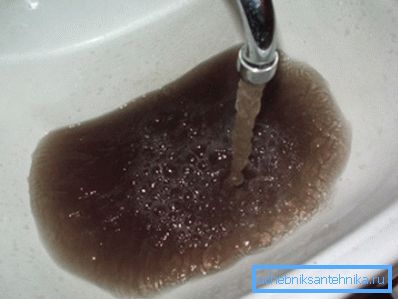
The water has become turbid and opaque. In almost all cases, the cause is a breach of tightness between the joints of the rings. Through the slit leaks upperwater containing clay and sand.
Sometimes the bottom filter can not cope with the cleaning, due to too thin a layer of pebbles and sand, laid during the construction of the well.
- You have discovered leaves, branches, a hated neighbor's cat or your favorite mother-in-law chicken in the mine. The reason for this is a broken hatch or door or their absence. An unprotected aquifer can be self-supplied with decent protection from large debris and curious animals.
- The dark, unnatural color of the water suggests that the well is used too rarely. Water simply stagnates, accumulating silt and mud in itself.
- "Blooming" water reports on actively breeding microscopic algae. By creating obstacles to the sun’s rays, you will upset the population of unwanted settlers by forcing them to leave your well.
- The smell and unnatural smack should alert you. Wastewater from sewers can leak into the mine. Therefore, it is worth carefully inspect its bottom.
- Rusty color, red suspensions and bloom on the walls of a glass of water show that the iron content is exceeded. The bottom filter is not able to completely cope with the cleaning, so the instruction recommends installing a cleaning system even when water is entering the house.
Cleaning the well

To reduce the number of services of the water carrier, you can occasionally arrange prevention. Dissolve a teaspoon of potassium permanganate in a bucket of water, then pour it into the mine. After a couple of hours, pump out the water, pouring it into the garden.
Note! Disinfection should be done only after the snow melts, in the spring. Then precipitation does not penetrate into the water pipelines.
Works with a grader
A grader (or grab) is a double bucket resembling a maxillary excavator equivalent. Down on a chain or rope, it hits the bottom of the well.
The bucket grab for cleaning the well is equipped with springs, closing the jaws of the device when it touches the ground. After that, the device is removed, freed from sludge, then lowered again.
The operation is repeated until the desired result is achieved.
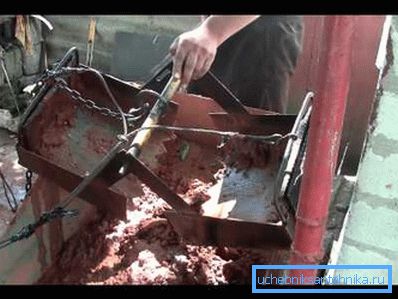
- Hand grab. It is designed for cleaning small and not too deep wells. Its indicators are considered to be: the minimum loading capacity from two tons, the mass of the lifted load - from 2 tons. The mechanism is lowered with a sturdy rope or cable. Equal in functionality can be considered a homemade ladle cleaning bucket.
- The device is equipped with a winch. More serious unit, designed for improved performance. Its variants are a three-maxillary analogue or equipped with two, three or four ropes.
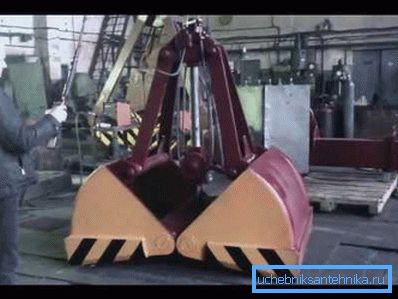
- For cleaning of large volumes of wells there are grabs with a own weight of up to 6.5 tons and a carrying capacity of up to 16 tons. It is clear that the price of the device is high for private use, therefore, such a device is often used for cleaning multi-user wells.
For summer residents, the first option is quite acceptable; the landlord will be able to cope with the work on his own or with an assistant. It is convenient to use a well gate as a winch, if there is one.
Pump use
If the extracted water has an acceptable taste, it does not smell, but it bothers you with insufficient transparency, it is not necessary to use a bucket for cleaning wells.
It is enough to apply a drainage pump to pump out the liquid containing impurities.
- Purchase or rent a good neighbor pump designed for pumping cold water. Good models are considered "Baby", "Brook", "Spring", "Gnome".
- Screw the hose to the device about half a meter long and lower its end to the bottom of the well. It will agitate the water, lifting the suspension.
- The pump should be suspended on a winch or cable at a distance of 30 cm from the bottom. Pull the hose to the place of discharge of dirty water.
- First, turn on the "trickle" that will beat the water. After about five minutes, activate the drain.
- Do not unplug the appliance until the pumped water is completely transparent. It will take an average of about two hours. During this time, about 10 cm of the dirty layer will be removed.
- If the sand is still present, and its amount does not decrease when pumped out, it means that you will have to thoroughly clean the well with a simultaneous overhaul. Blame it all - the gap in the mine, through which the earth enters a drinking source.
Overhaul with cleaning
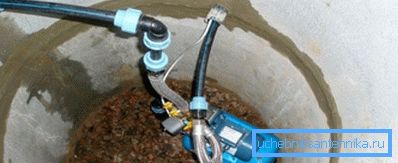
When all the tried and tested methods do not help, and the pump or grab for cleaning the wells did not bring the expected results, you will have to pump out the water completely, then seal all the internal seams.
You will need the following.
- Pump for pumping.
- Ropes or rope for insurance.
- Long ladder or swing. They should be made stronger, as the worker will stand on a hanging board with his feet.
- Bucket and brush for metal surfaces.
- Rubber boots.
Note! It is desirable to work together. The first will go down, the second will feed / take the tool and the buckets, the third will hedge the first two and the equipment.
After pumping out the water and cleaning the walls, repair the gaps between the rings. Next, clean the bottom, the filter layer, if necessary, replace.
Conclusion
So that at your point of the fence there is always clean water, you should do the prevention, cleaning and repair of the water carrier on time. Then the trouble will not take you by surprise.
The video presented in this article will additionally describe the stages of work.